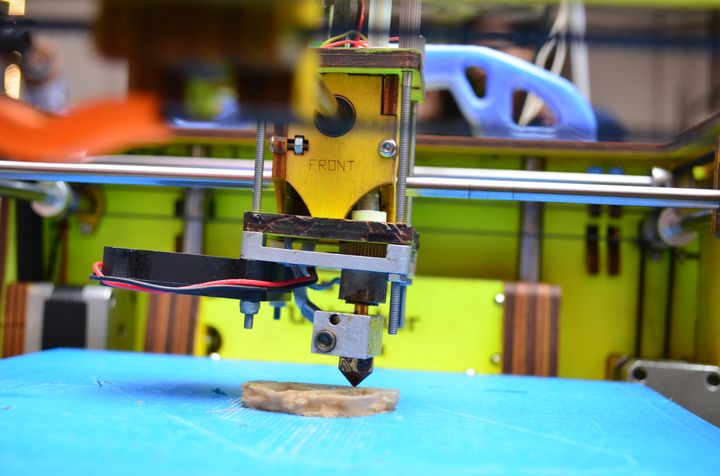
Nothing is truly safe from hacking these days, is it? While that may sound a bit pessimistic, rest assured, we're not talking about another run-of-the mill Denial of Service attack, or hacking a celebrity Gmail account. In case you didn't know, "hacking" can now be used to describe a method for reverse-engineering, re-assembly, and developing shortcuts for anything from increasing your daily productivity to getting the best deal on airline tickets. But it can also be so much more than that. With the advent of 3D printing and the proliferation of online courses in every computer language and subject imaginable, there's a new level of "hacking" taking place, and some of these DIY feats are pretty amazing.
College students are notorious for getting by on a shoestring budget, but this is a whole new animal. You and your classmates may have known the best happy hours and pizza deals in town; this hero took one look at the painful price of orthodontics and took matters into his own hands-- with himself as the test subject. Really hammers the point that necessity is the “mother of invention.”
Of all of the things for kids to effectively hack – computers, video games, and even basic appliances – the fact that one college student took it upon himself to hack a very common orthodontic device might seem a bit -- well, unusual. However, how he did it is actually pretty brilliant, and it may turn the orthodontics industry on its head.
Meet Amos Dudley
Amos Dudley, a 24-year-old digital design major at the New Jersey Institute of Technology, is much like any other college student. However, he’s gotten a lot of attention lately from his peers, teachers, and even mainstream media thanks to his latest 3D-printed project. Dudley wore braces in middle school, but because he didn’t wear his retainer as he should have, his teeth shifted. Faced with paying up to $8000 for very common products known as Invisalign, Damon, and ClearCorrect, he decided to take matters into his own hands.
Enter 3D Printing Technology
The digital design major certainly has a knack for new technology, particularly as it pertains to 3D printing, a relatively new technology that allows users to “print” complex objects with nothing more than some basic coding. In fact, Dudley even built a 3D printer for his personal use at home. These devices can range in cost from a couple of hundred dollars for very small and limited options up to thousands of dollars for some of the most sophisticated technology on the planet. After realizing that he wasn’t smiling often because he wasn’t satisfied with his teeth, he decided to print his own orthodontics device.
How He Did It
First, Dudley used his school’s 3D printer (which was far more sophisticated than his home-built one) to scan and print exact replicas of his teeth. To create the set of 12 clear braces, or alignment trays, which are changed about once a month and help guide teeth into the right position, he first figured out how far he had to move his teeth to straighten them and correct misalignment. Then, he divided that distance by the maximum recommended distance a tooth should travel. With that information, he was able to calculate the proper design for each of the 12 trays and program the 3D printer with that information in order to “print” the entire set.
Did It Work?
When he put in the first tray, Dudley said he felt a lot of pressure on the teeth that were supposed to move the most, which was very relieving. He continued to swap the trays out each month for one year, and now sports a beautiful, straight, and perfectly aligned smile. He’s often asked how much it cost to straighten his own teeth, and surprisingly, the answer is about $60. Though Dudley was fortunate enough to have access to a high-tech 3D printer, which helped to reduce the costs, it is very likely that others around the world will use similar technologies to help them straighten their own teeth for a fraction of the cost.
Will Amos Dudley’s decision to create his own clear alignment trays with the 3D printer at his school change the orthodontics industry forever? That remains to be seen, but there are certainly a lot of people questioning the need to pay $8,000 for a device that costs about $60 to manufacture. Who could blame them? Information and low-cost technology empowers more people today than ever before in history. Finally, breakthroughs aren't limited to someone with endless capital and high-powered branding. Sometimes, the most important innovations come from the unlikeliest of places. HeroX gets that, maybe better than anyone else, which is why we shine a light on the biggest problems and broadcast them to the massive HeroX global community. It's in the chaos of the crowd where the magic happens; so when someone has the answer to your problem -- whether they're in Southeast Asia or central Indiana -- you're ready for it. We're waiting for you to take that first step, so get started today and find out how to make the impossible, possible. You're welcome.








